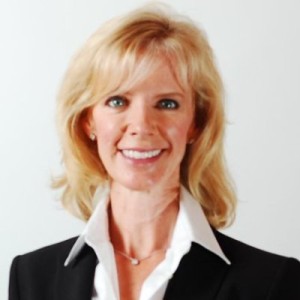![The 100-Yard Dash Leadership Theory]()
Uncategorized
One evening, author and leadership consultant John Maxwell was having dinner with Olympic athlete Jackie Joyner-Kersee. Until last year, Joyner-Kersee was the most decorated U.S. woman in Olympic track and field history.
As they were chatting, Maxwell decided to have a little fun with the athlete. He sat his fork down on his plate, looked Joyner-Kersee straight in the eye, leaned forward and said, “I bet that I can beat you in a 100-yard dash.” Joyner-Kersee stopped in mid-bite, and searched John’s face for any hint of whether he was joking or serious. This was the first woman ever to break 7,000 points in the heptathlon, a 2-day, 7-event contest consisting of the 100 meter hurdles, high jump, shot put, 200 meter dash, long jump, javelin throw and the 800 meter run.
Maxwell let a moment or two pass, then said, “Actually, now that I think about it, if you give me a 10-yard head start, I bet that I can beat you in a 100-yard dash.” Over the course of the next few minutes, Maxwell continued to stretch his need for a head start until he settled on, “Yes! If you give me a 90-yard head start, I’m 100% confident that I can beat you in a 100-yard dash!”
Maxwell’s 100-yard dash dinner story serves as a reminder to leaders. Whether you’re trying to implement a new process, orchestrate innovation, or mold a culture, you have to meet your team where they are before you can get them to where you want them to go.
If you’re leading a team, chances are, you’re far ahead of the rest of the group from Day 1. You may have more years of experience, and less fear of calculated risk. You probably have more data and background information that led to the decision that change is necessary. You have a better grasp of the ideal outcome. That’s the equivalent of a 90-yard advantage, and a major team de-motivator. Think about the last time you gave your team a new project, and ask yourself these three questions:
1. Did I take the time to lay the proper groundwork, or did I jump straight to the end?
2. Did I give the team time to ask questions, or did I do most of the talking?
3. Did I help the team understand what “there” looks like, or did talk mostly about what’s not working today?
In a Harvard Business Review series on The Secret of Great Teams, an effective team was defined as “a group of people who do collective work and are mutually committed to a common team purpose and challenging goals related to that purpose.” As a leader, it’s your responsibility to give your team what they need to truly succeed.
Another truism of Maxwell’s is this: leaders who complain that “it’s lonely at the top” aren’t really leading people anywhere – they’re just taking a hike. Make sure you give them context, allow plenty of time for their questions, and give them a roadmap to success.
Question: What tools do you use to make sure you’re not leaving your team in the dust?
 Interested in getting more content like this? Subscribe to CEE News!
Interested in getting more content like this? Subscribe to CEE News!
CEE News is designed to help you with the challenges you face every day by sharing infographics, white papers, best practices, and spotlighting businesses that are getting it right. I hope you’ll subscribe to CEE News and it becomes a resource that continually adds value to your walk as a leader. If I can be of assistance in any way, please don’t hesitate to reach out!
![The 100-Yard Dash Leadership Theory]()
Purpose
Yesterday, I had the honor of speaking at the American Public Transit Authority Annual CEOs Summit in San Diego. The Summit was attended by about 150 public transit executives from across the country.
Like many other industries in the U.S., public transit faces an uncertain future. Regulatory uncertainty – where does public transit fit in the new Administration’s infrastructure plan? Macroeconomic uncertainty – when the economy is up, gas and cars are affordable, so transit ridership is down. Disruptive uncertainty – will ride sharing services like Uber and Lyft complement or erode public transit services?
No industry is immune. Uncertainty will remain high for the foreseeable future. Forecasts are likely to be wrong. The world is no longer predictable or stable.
During times of uncertainty, it is the leader’s role to bring order to chaos, calm nerves, and manifest a non-anxious presence. One of the most effective ways to do this, is to reground people around organizational purpose. Now is the time to clarify and renew your commitment to the bigger impact – collectively – that your organization is making in the world.
To that end, I challenge you to honestly assess where your organization falls in the 5 Levels of Purpose:
Level 1: Our organization has not clarified or codified its purpose.
Level 2: I couldn’t tell you what our purpose is without looking on the website – and that’s probably true for most of our employees as well.
Level 3: Our organization has a purpose, but we don’t actively use it to inspire employees.
Level 4: Our organization has a purpose that inspires our employees, but we don’t take purpose into account when making business decisions.
Level 5: Our organization has a clearly defined purpose that is hardwired into our DNA. It inspires our employees and guides our business decisions.
If your answer fell between Levels 1 through 3, you have an untapped resource that will help you stabilize your team, and inspire them to work together to make a collective impact. If you answered Level 4, work to hardwire purpose into your business decisions. Think about what you measure, what you reward, and what you ignore. Are they in line with your organizational purpose?
Level 5 companies like Patagonia call purpose “Our Reason for Being”. At Level 5, you’re not immune from uncertainty, but you are clear about why the world is better off because your organization exists. Having clarity of purpose is like having a North Star. It will keep you on your path, and help you make decisions that will sustain you through the chaos.
Question: Have you worked for an organization with a clear sense of purpose? How did that impact you as an employee?

Interested in getting more content like this? Subscribe to CEE News!
CEE News is designed to help you with the challenges you face every day by sharing infographics, white papers, best practices, and spotlighting businesses that are getting it right. I hope you’ll subscribe to CEE News and it becomes a resource that continually adds value to your walk as a leader. If I can be of assistance in any way, please don’t hesitate to reach out!
![The 100-Yard Dash Leadership Theory]()
Multigenerational Workforce
As our Employee Engagement Specialist, Jenny Jacobs brings an infectious humor and midwestern sensibility to everything she does. Jenny is a lifelong learner and a natural teacher who guides our clients through a structured employee engagement method that improves bottom lines and results in changes that last. Jenny holds a B.A. in Organizational Psychology from the University of Michigan and is a 2017 Masters candidate for Organizational/Industrial Psychology from Azusa Pacific University. And don’t forget to check out the short video below where Jenny introduces herself and our new program.
By: Jenny Jacobs
Every generation imagines itself to be more intelligent than the one that went before it, and wiser than the one that comes after it. – George Orwell
I recently received an email with the subject line: Transform your bedroom into a master retreat. The thought of this prospect filled my heart with delight. However, I soon realized it would only happen if I were the one who did all the work! I then decided to focus my energy elsewhere…
Everyone loves the result of a transformation, but doing the work to bring that transformation about can seem daunting. Where do I begin? How do I do it? What if it fails? It’s enough to make you resign to the status quo, even though you know the status quo is not as good as it could be.
Are you ready to ditch the old, ineffective ways of trying to engage your diverse workforce? Are you prepared to implement new, transformative concepts that inspire and equip your entire team? If so, I’m excited to introduce our new program called 5 Generations. Side by Side.
For the first time in history, five generations are together in the workplace. Why 5? Here are some converging trends:
- Traditionalists – not ready to retire
- Baby Boomers –’sandwich’ generation supporting millennials and traditionalists
- Generation X – rising executives
- Millennials – the new managers
- Generation Z – college graduates
Today’s managers may have both a 22 year old and a 75 year old on their teams. When things go wrong, generational differences can soon turn into blame:
“They don’t have the proper work ethic!”
“They don’t understand technology.”
“If they would only pay attention I wouldn’t get so frustrated.”
It’s important to appreciate the differences that each generation brings to (and expects from) work, but just as important not to use these differences to reinforce generational divisions. When we focus on the differences of people – whether in terms of age, race, or gender – there is only division.
The 5 Generations. Side by Side. program focuses on setting aside generational differences and bringing people together. By tapping into the power of the Transformative Leadership Model© this program focuses on what every generation wants in their work environment:
- Meaningful Work
- Aligned Goals
- Strengths-Focused
- Learning & Growth
Over the next few months I will be unpacking each quadrant of the Transformative Leadership Model©. If you’re ready to ditch the old and make the changes that truly engage every generation, I invite you to join me to learn more about 5 Generations. Side by Side. and the Transformative Leadership Model©.


Letter from the Founder

Welcome to the eighteenth issue of CEE News!
One of the most common topics on our clients’ minds these days is diversity. A record number of organizations are reviving and rebuilding their diversity programs. The subject is no longer consigned to a small print paragraph on corporate websites. Instead, more CEOs are making diversity a key part of their platforms. Lockheed Martin CEO Marillyn Hewson credited diversity as a key engine in completing needed work in the energy space. Genentech recently posted an advertisement for a Senior Director of Innovation, Diversity & Inclusion
(more…)

Sticky Solutions
Sticky solutions to your everyday business challenges

Question: We implemented 360 Performance Reviews this year. Frankly, I was hurt by some of the feedback. As a senior executive of our firm, I know that it is important for me to temper my reaction and be a model for others. What advice do you have for getting past the sting?
(more…)
 Interested in getting more content like this? Subscribe to CEE News!
Interested in getting more content like this? Subscribe to CEE News!


